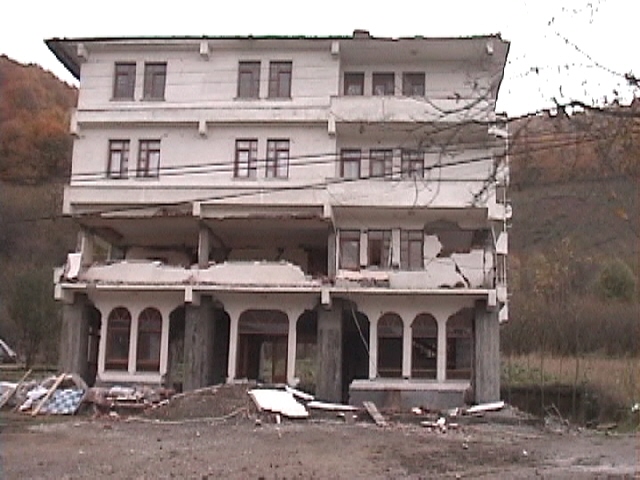
Kaynasli

Figure 1. The four-story apartment building lost most of masonry infill at the second floor (November 17, 1999, 14:47:51, N 40.7725, E 31.3301).
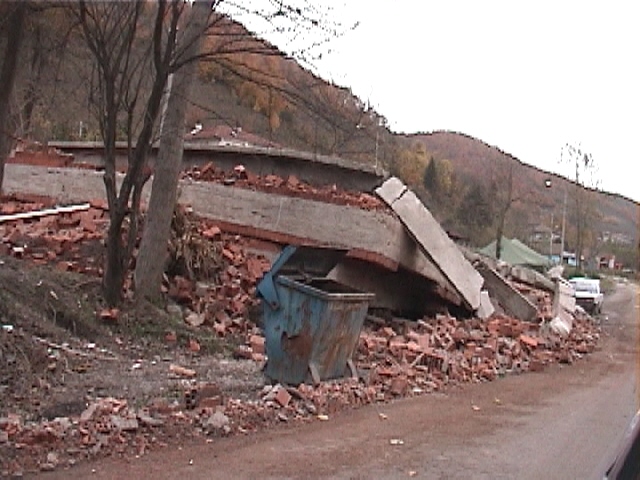
Figure 2. Collapse of a reinforced concrete building in Kaynasli (November 18, 1999, 08:15:08, N 40.7730, E 31.3315)

Figure 3. The fault surface rupture in Kaynasli displayed several parallel strands in this open field (November 18, 1999, 08:29:47, N 40.7751, E 31.3369)
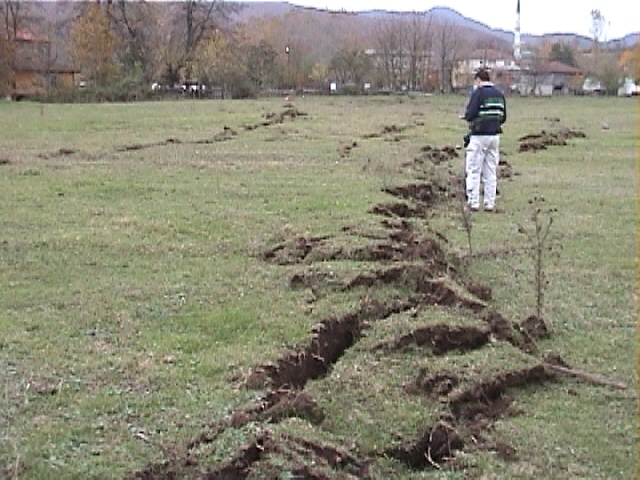
Figure 4. There were two or three parallel strands along the fault surface ruptures, depending on the location in this flat field (November 18, 1999, 08:31:05, N 40.7752, E 31.3366).
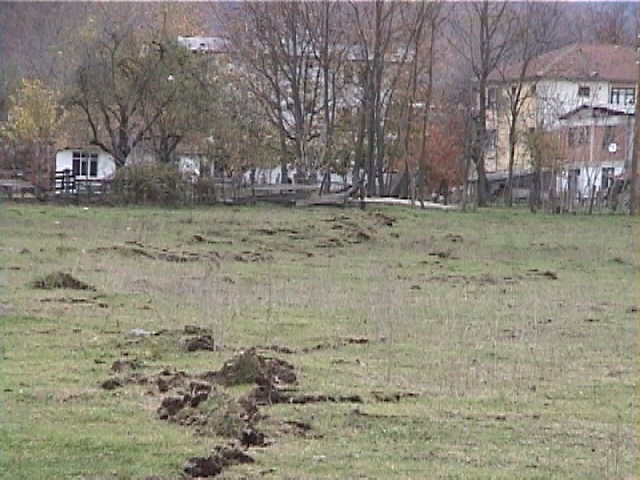
Figure 5. The fault surface rupture was not really straight (November 18, 1999, 08:30:27, N 40.7752, E 31.3368).
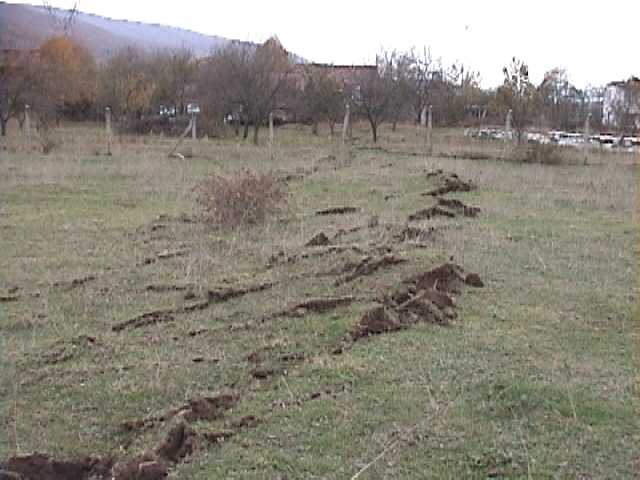
Figure 6. There was a one-foot vertical offset in this section of the fault surface rupture in Kaynasli (November 18, 1999, 08:35:19, N 40.7750, E 31.3365).
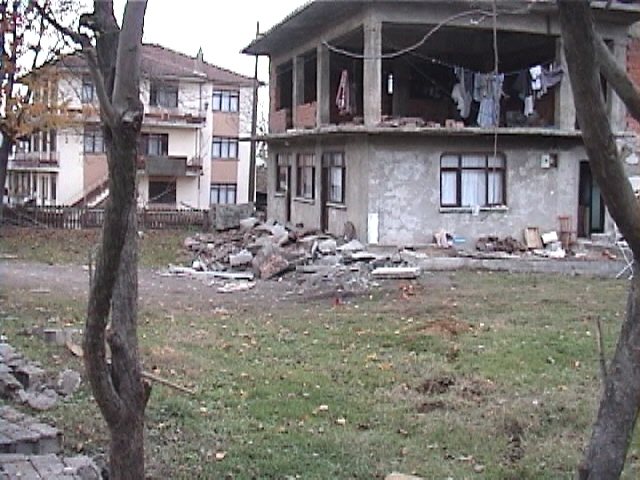
Figure 7. The fault surface rupture passed through a building, which rotated but did not collapse (November 18, 1999, 09:06:06, N 40.7752, E 31.3399).
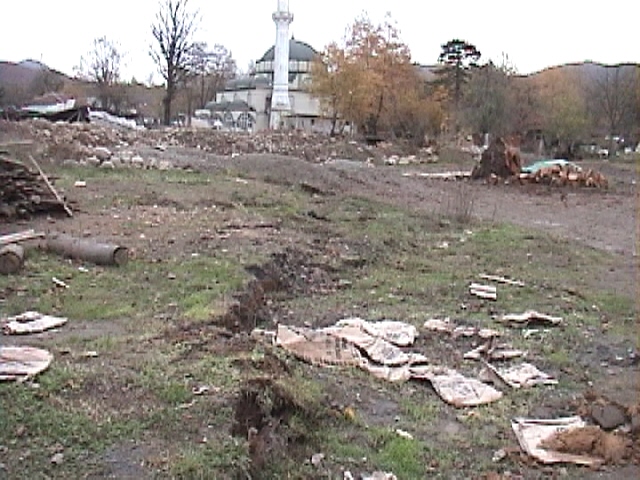
Figure 8. The fault surface rupture had a one-foot vertical offset (November 18, 1999, 09:13:35, N 40.7753, E 31.3413).
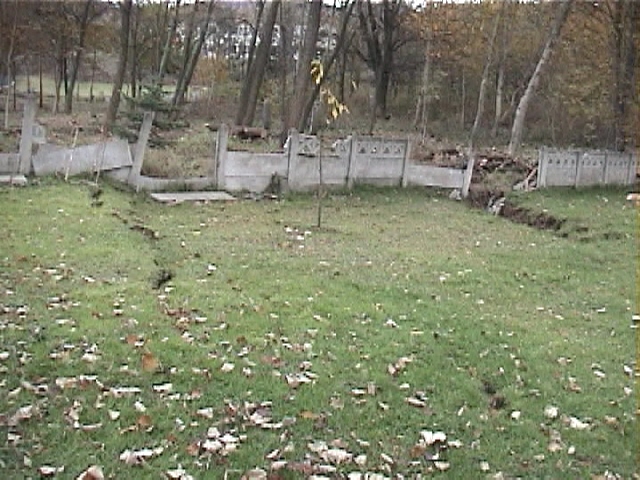
Figure 9. Two parallel strands of the fault surface rupture cut through the cemetery wall adjacent to the mosque in Kayanasli (November 18, 1999, 09:31:40, N 40.7744, E 31.3426).
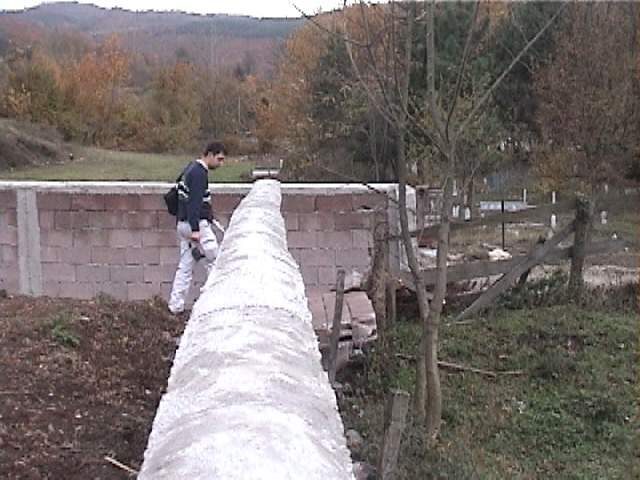
Figure 10. The fault surface rupture passed through the corner of the masonry wall, and shifted the wall to the right (November 18, 1999, 09:52:52, N 40.7744, E 31.3433).
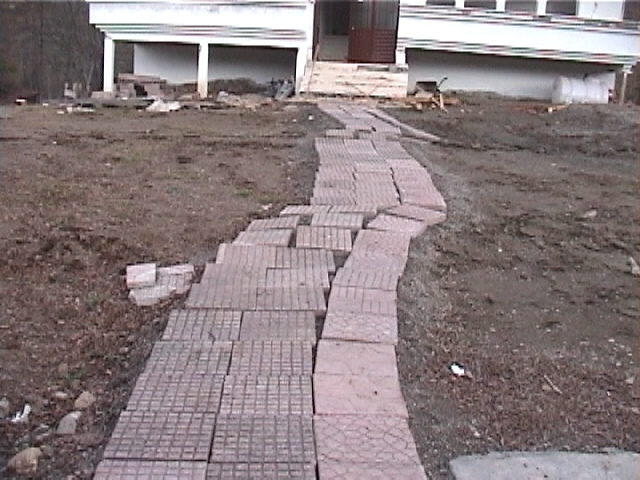
Figure 11. Two strands of the fault surface rupture shifted the tiles in front of the apartment building (November 18, 1999, 10:00:34, N 40.7738, E 31.3438).

Figure 12. The fault surface rupture passed very close to the house, and took away part of the staircase (November 18, 1999, 10:05:35, N 40.7746, E 31.3437).